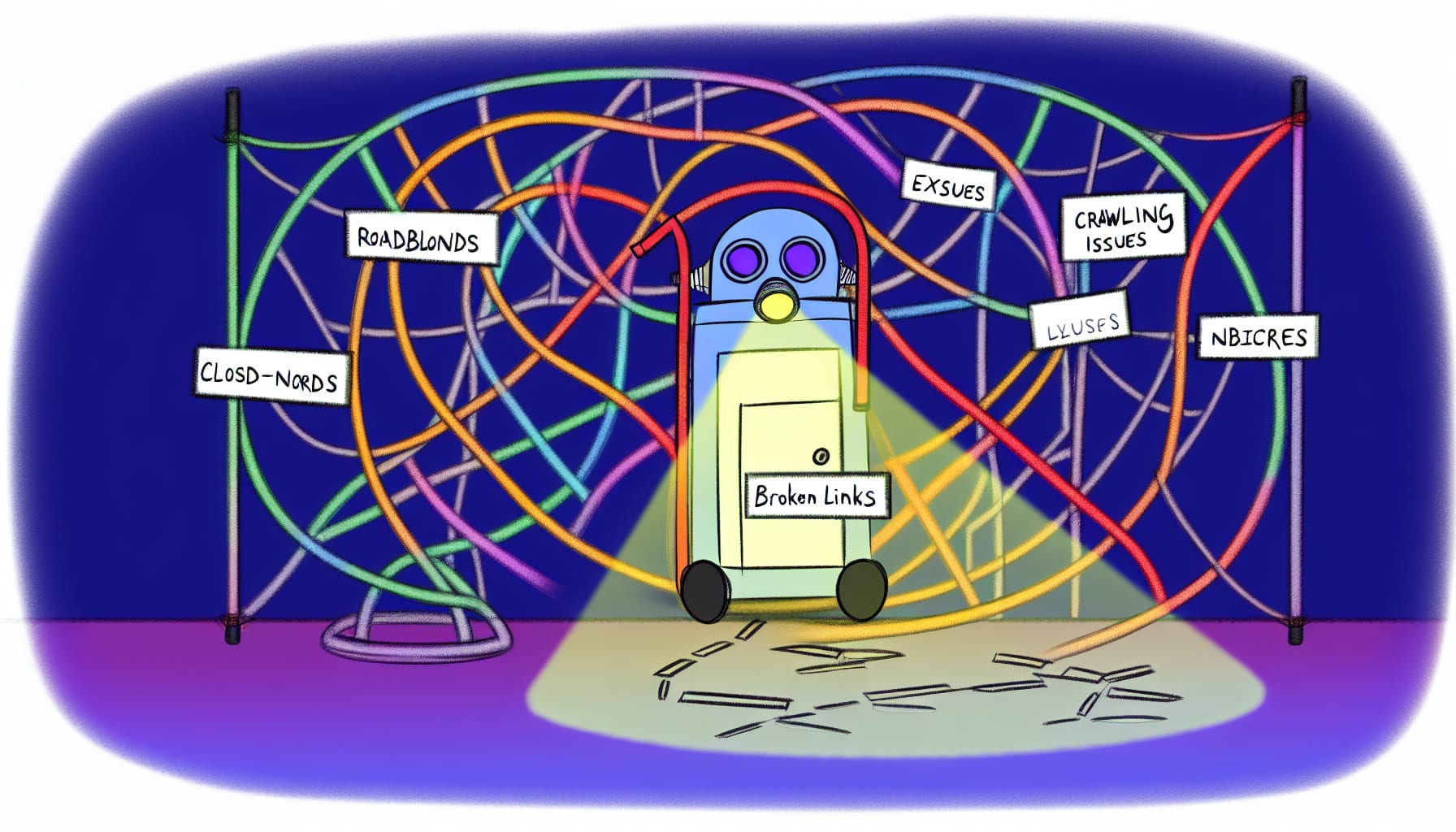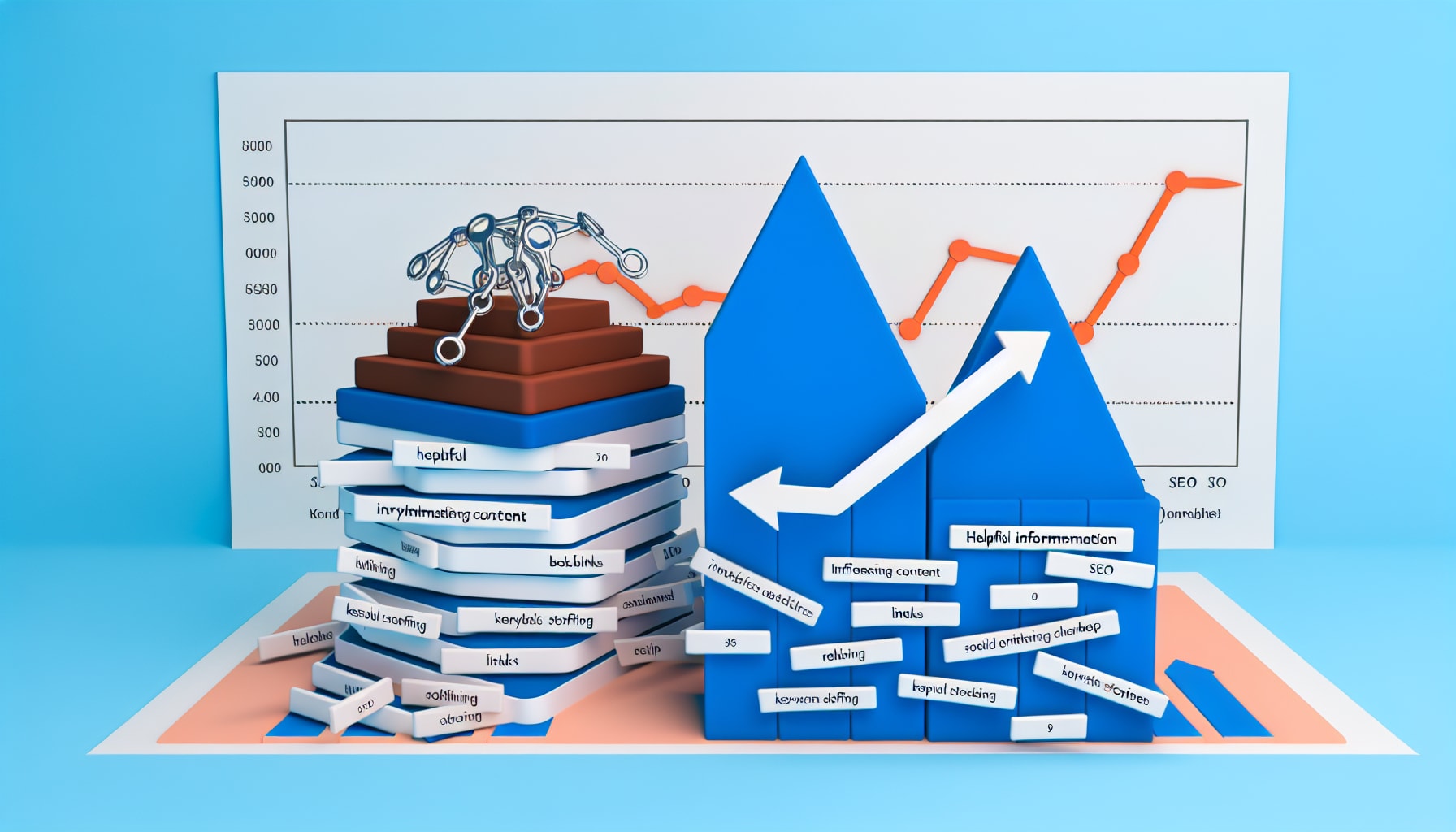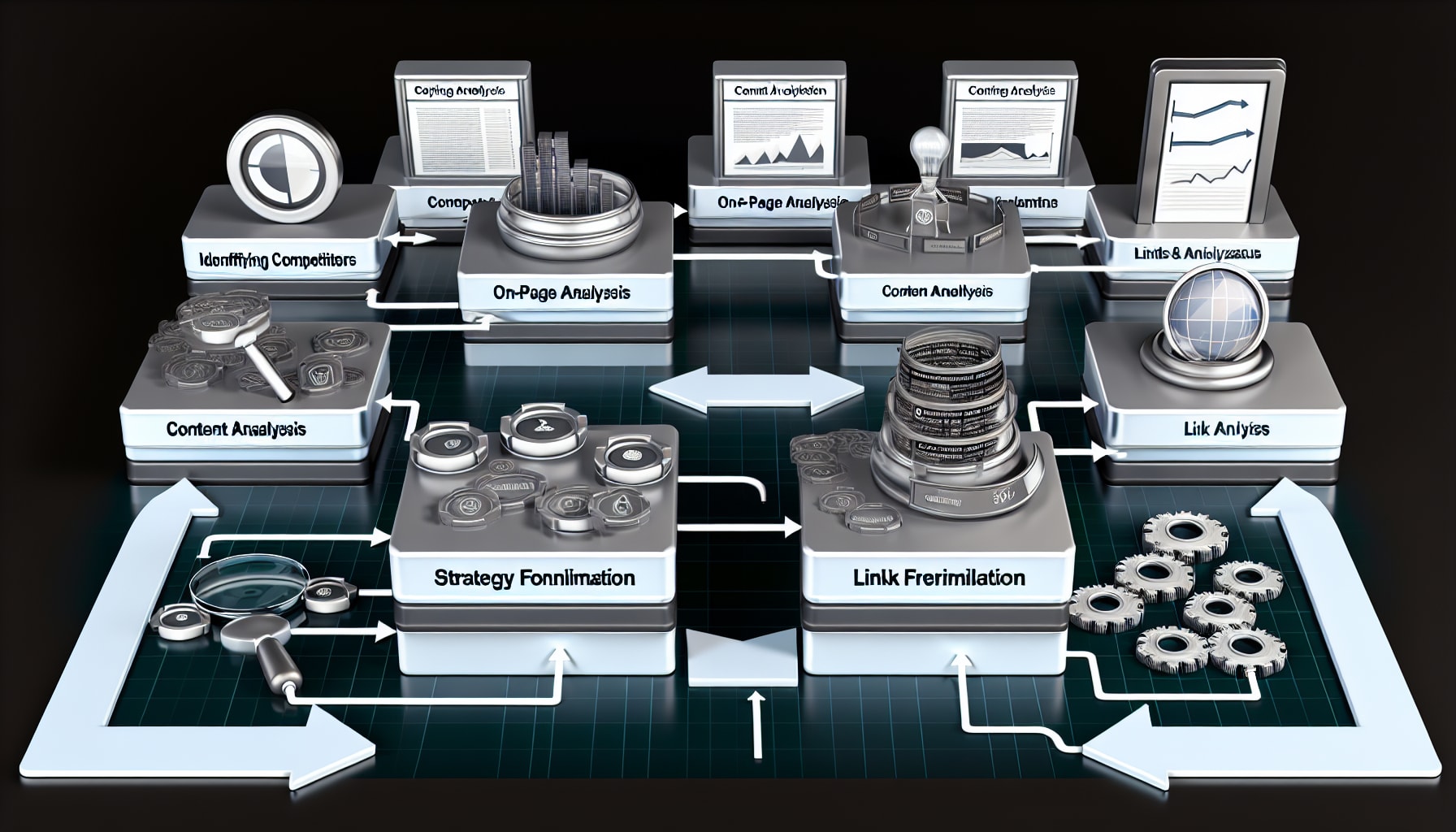You’ve poured hours into crafting what you believe is a stellar piece of content. You’ve followed the guides, sprinkled in keywords, and hit “publish” with high hopes. Yet, weeks later, your article is languishing on the second or third page of Google’s search results, attracting little to no organic traffic. In the age of AI-generated content and relentless competition for visibility, it’s easy to fall into the trap of publishing blog after blog and seeing little to no traction. This experience is frustratingly common, but the reasons behind it are rarely a mystery. The problem is often not a single mistake, but a combination of hidden issues across technical foundations, content strategy, and competitive awareness. This article will break down the core reasons your content isn’t ranking and provide a clear, actionable roadmap to fix them. The goal isn’t to game the algorithm—it’s to align your content with what both search engines and users value.
Let’s diagnose the problem and get your content the visibility it deserves.
What Prevents Search Engines from Indexing Your Content?
Before content can rank, it must first be discovered and understood by search engines—a process known as crawling and indexing. If Google can’t find or read your page, it effectively doesn’t exist in the search results. This is the most fundamental hurdle to overcome.
Your content will never rank if search engines are blocked from indexing it or haven’t had enough time to discover it.

Website Indexing and Crawling Issues
The first step is to confirm if your page is even in Google’s index. A simple way to check is by using the site: search operator in Google. For example, typing site:yourwebsite.com/your-page-url will show if that specific page is indexed. If nothing appears, Google either hasn’t found it or can’t add it to its database. This can be due to crawl errors, where Google’s bots encounter problems trying to access your page, such as server errors or broken code. You can use the URL Inspection Tool in Google Search Console to get a detailed report on a specific page’s indexing status and any errors found.
Robots Protocol and Meta Tag Restrictions
Sometimes, you might be unintentionally telling Google to stay away. A file in your website’s root directory called robots.txt gives instructions to search engine crawlers. A misconfigured robots.txt file can block access to important pages or even your entire site. Another common culprit is a “noindex” meta tag in your page’s HTML header. This tag explicitly tells search engines not to include the page in their index. This is useful for private pages or drafts but can be accidentally left on a published post, making it invisible to search.
According to Google’s own documentation, “A ‘noindex’ tag tells search engines not to include the page in search results.” While simple, this directive is a powerful and frequent cause of indexing problems, especially on new or recently updated pages where settings may have been overlooked.
Indexing Delays for New Sites and Content
Patience is a virtue in SEO. If your website or the specific page is brand new, it simply might take time for Google to crawl and index it. Search engines prioritize crawling sites they know and trust. A new site has to build that trust. This initial waiting period, sometimes called the “Google sandbox,” can take anywhere from a few days to several weeks. While you can’t completely skip this phase, you can speed it up by submitting an XML sitemap via Google Search Console, which provides a map of your site for easier discovery.
Technical and Structural Issues That Hurt SEO Rankings
Once you’ve confirmed your content is indexed, the next layer to investigate is your site’s technical health and architecture. A slow, confusing, or insecure website provides a poor user experience, and Google’s algorithms are designed to penalize this. These issues can hold back even the most brilliant content.
A weak technical foundation, poor site structure, and security flaws can prevent well-written content from ever reaching its ranking potential.

Website Speed and User Experience
How quickly your page loads is a critical ranking factor. With the introduction of Core Web Vitals, Google measures user experience based on loading performance, interactivity, and visual stability. If your site takes more than a few seconds to load, visitors are likely to bounce, sending a negative signal to Google. Large images, bloated code, and slow server response times are common culprits. Tools like Google’s PageSpeed Insights can help you diagnose and fix these issues, which is crucial for both desktop and mobile users.
Internal Linking Structure Optimization
Internal links are the pathways that connect your pages. A strong internal linking structure helps search engines understand the relationships between your content and establishes a topical hierarchy. A page with few or no internal links pointing to it is known as an “orphan page.” Since crawlers rely on links to discover content, these pages are often overlooked and struggle to rank. Strategically linking from high-authority pages on your site to new content can pass on “link equity” and signal its importance to Google.
Server and Security Issues
Your website’s reliability and security are non-negotiable. Frequent server downtime means that both users and search engine crawlers can’t access your site, which can quickly lead to a drop in rankings. Furthermore, security is paramount. A site that doesn’t use HTTPS is flagged as “not secure” by browsers, eroding user trust. Google prioritizes secure websites, making an SSL certificate essential for any site hoping to rank well in 2024 and beyond.
As Andy Crestodina of Orbit Media Studios points out, technical SEO problems are often overlooked but foundational. He notes, “You might have an issue with ‘noindex’ meta tags, the robots.txt file, page speed and canonicalization … in my experience, most pages don’t have technical SEO problems,” but when they do, they are absolute roadblocks.
Duplicate Content and Canonicalization Issues
Google aims to show the most authoritative version of a piece of content. If you have multiple pages with identical or very similar content, it creates a duplicate content issue. This can confuse search engines, forcing them to choose which page to rank, often diluting the authority of both. This is solved using a canonical tag, an HTML element that tells Google which version of a page is the “master” copy that should be indexed. This is common on e-commerce sites with product variations but can affect any website where content might appear under multiple URLs.
The Critical Role of Content Quality and Search Intent
Even with perfect technical SEO, your content won’t rank if it doesn’t satisfy the user. Google’s core mission is to provide helpful, relevant, and trustworthy answers. The Helpful Content Update has made it clear: content created for people, not just search engines, will win. This means originality, depth, and a clear understanding of what the user is looking for are paramount.
High-ranking content is not just optimized; it is genuinely helpful, demonstrating expertise and directly matching the user’s search intent.

Content Originality and Depth
In an era flooded with AI-generated text, originality is your greatest asset. Content that simply rehashes information already available on the first page of Google offers no new value. A study by Ahrefs found that over 90% of pages get no organic traffic from Google, largely because they fail to stand out. Your content must offer a unique perspective, new data, personal experience, or a more comprehensive explanation than what already exists. Thin content—pages with very little text or substance—is unlikely to be seen as a valuable resource and will struggle to rank.
Matching User Search Intent
Search intent is the “why” behind a search query. Is the user looking for information (informational), trying to buy something (transactional), or looking for a specific website (navigational)? If your content doesn’t align with the user’s intent, it won’t rank. For example, if someone searches “buy running shoes,” they expect to see product pages, not a blog post about the history of running. To determine intent, simply Google your target keyword and analyze the top-ranking results. Are they blog posts, videos, product pages, or lists? This shows you what format Google believes best serves the user.
According to Google’s own guidelines on creating helpful content, you should focus on creating “people-first content.” It asks creators to question if their content “demonstrates first-hand expertise and a depth of knowledge” and avoids “writing about things in a very niche topic area without any real expertise.”
Content Formatting and Presentation
How you present your content matters. A giant wall of text is intimidating and difficult to read. Effective formatting improves user experience and “dwell time”—the amount of time a visitor spends on your page. Use clear headings (H1, H2, H3), short paragraphs, bullet points, and bolded text to break up the content and make it scannable. Including images, infographics, and videos not only makes the page more engaging but can also help it rank in image and video search results.
E-E-A-T (Experience, Expertise, Authoritativeness, Trustworthiness) Signals
Google uses E-E-A-T as a framework to assess content quality, especially for “Your Money or Your Life” (YMYL) topics like finance and health.
- Experience: Is the content created by someone with real-life experience on the topic?
- Expertise: Does the author have demonstrable knowledge?
- Authoritativeness: Is your site a recognized authority in its niche?
- Trustworthiness: Is your site secure and your content accurate?
You can signal E-E-A-T by including author bios, citing credible sources, and securing backlinks from other authoritative websites. This builds trust with both users and search engines.
Competitive Analysis and Continuous Optimization Strategies
SEO is not a “set it and forget it” activity. It’s a competitive landscape where your rivals are constantly working to improve their rankings. Simply publishing good content isn’t enough; you must understand the competitive environment and continuously refine your strategy to stay ahead.
To succeed in SEO, you must treat it as an ongoing process of analyzing competitors, optimizing existing content, and building authority over time.

Keyword Competition and Long-Tail Strategy
One of the most common reasons for not ranking is targeting keywords that are too competitive. If you’re a new website, trying to rank for a high-volume, single-word term like “marketing” is nearly impossible. The top results are dominated by established sites with immense authority. A smarter approach is to target long-tail keywords—longer, more specific phrases like “content marketing strategies for small businesses.” These have lower search volume but also less competition and often a higher conversion rate because they match a more specific user intent. Tools like the Ahrefs Free Keyword Generator can help you find these opportunities.
Competitor Content Analysis
To outrank your competitors, you need to know what they’re doing right. Analyze the top-ranking pages for your target keyword. Ask yourself:
- How in-depth is their content? (Word count, topics covered)
- What format are they using? (Listicle, how-to guide, video)
- What is their backlink profile like? (Who is linking to them?)
- How do they demonstrate E-E-A-T?
Your goal is not to copy them, but to create something significantly better. This might mean providing more detail, offering a unique perspective, or creating a more engaging user experience.
As Casie Gillette of Customers.ai explains, “Take a look at what is ranking ahead of you and how you can create something better. As SEOs, we talk about authority and it’s the pages that already exist that have authority. Use what you have.” This highlights the power of improving what you’ve already built.
Content Updates and Continuous Optimization
Digital ink is never dry. An article you published a year ago may now be outdated. Regularly updating and refreshing your existing content is one of the most effective SEO tactics. Look for pages that are “almost ranking” (e.g., positions 6-15) and improve them. You can add new information, update statistics, improve formatting, and optimize for keywords that the page is already getting some traction for (which you can find in Google Search Console). This signals to Google that your content is still relevant and can result in a significant ranking boost.
Link Building and Authority Enhancement
Backlinks—links from other websites to yours—remain a powerful ranking signal. They act as votes of confidence, telling Google that other sites find your content valuable. While quality content can attract links naturally, proactive link building is often necessary to compete. This can involve reaching out to other sites in your niche, guest posting on reputable blogs, or promoting your content to journalists and influencers. Each high-quality backlink you earn strengthens your site’s overall authority, making it easier for all your content to rank.
Conclusion
If your content isn’t ranking, it’s rarely due to a single, isolated issue. More often, it’s a combination of factors spanning technical health, content quality, and competitive strategy. By systematically diagnosing your website, you can move from frustration to a clear plan of action.
Start by ensuring your site is properly indexed and free of technical roadblocks. Then, shift your focus to creating genuinely helpful, people-first content that deeply satisfies user intent and demonstrates your expertise. Finally, embrace SEO as an iterative process of analyzing your competition, refreshing old content, and consistently building your site’s authority.
Ranking on Google is a marathon, not a sprint. But by focusing on these core principles, you can stop publishing into the void and start creating content that not only ranks but also builds a lasting connection with your audience.
Tools like this won’t fix everything, but they can make things easier.
Sometimes, getting unstuck is just about removing one small barrier.
If this sounds useful to you, Feel Free to Explore the Tool
Here →









